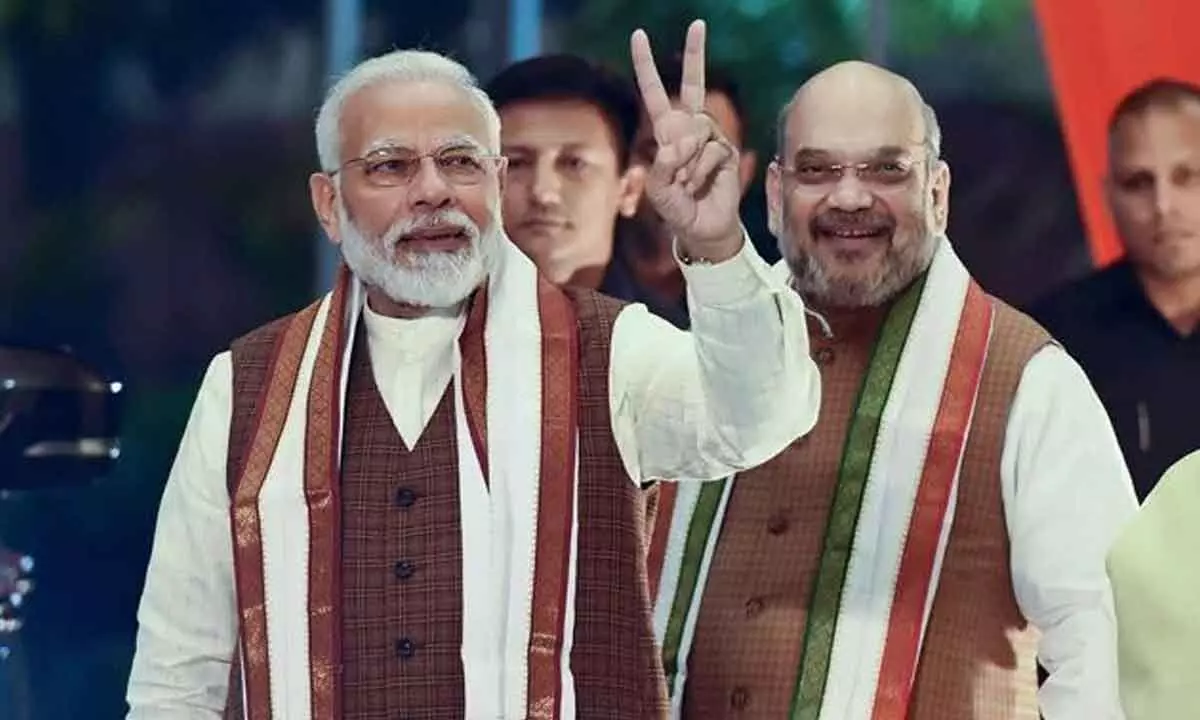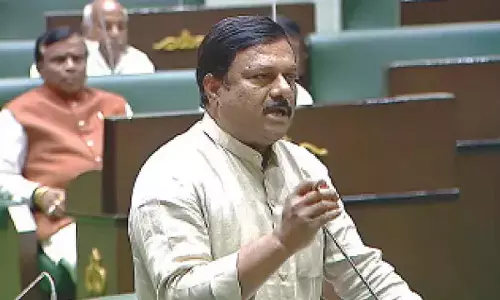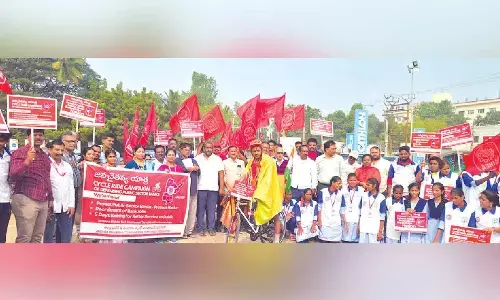Target 370: Is BJP oversanguine?

Though the saffron party is ensconced in Hindi heartland, its assertion of its ability to achieve 370 LS seats – why 370? Think of Article 370 abrogation –appears definitely a little stretched. Punjab, Haryana, Delhi, West Bengal, and more importantly the southern states can queer the pitch for its aggressive outreach. In States like Uttarakhand, Jharkhand, Delhi, Himachal Pradesh, Goa, Jammu and Jharkhand etc., it already won 198 of the 210 seats. How much can it wrest more? Factor in saturation. However, surveys report it will be expected to sweep in Madhya Pradesh, Rajasthan, Uttar Pradesh and Gujarat. In 2019, it had got 37.36% votes but now to win 370 it has to be somewhere close to 50 per cent and this would be possible only it if increases its vote share in every state
The Bharatiya Janata Party wants to roll out a new kind of Political Pesarattu or Dosa – or call it Paratha – by targeting 370 seats on its own. Whether the target is really possible is the big question now.
Political strategists like Prashant Kishore feel that it is a very tall order. He says he would be surprised if BJP succeeds on its own to win 370 seats. This at the most could be a target for the BJP workers, he says. Since it is Prashant who is saying this, well one cannot simply brush it aside and needs to ponder over.
In 2019, BJP on its own won 303 seats, which means they have to win 67 more seats this time to reach the 370 target. The big question is from where? Though the opposition parties have failed to pose a challenge to BJP, because of lack of leadership and unity, the road is not so smooth.
If we analyse the results of 2019 elections, it is clear that the strike rate of NDA was 94% in States like Uttarakhand, Jharkhand, Delhi, Himachal Pradesh, Goa, Jammu and Jharkhand etc., from where they had won 198 of the 210 seats. How much more can it increase its strike rate in these states?
In Uttar Pradesh, the BJP this time hopes to increase its tally to 70 as against 62 in 2019. UP has 80 Lok Sabha seats. Maybe, it can get a few more seats as they hope that the Ram Temple at Ayodhya will push up the number of seats. Another reason for the possibility getting more seats in UP is the failure of Samajwadi party and Congress party to enter into a firm understanding on seat sharing. Still, both parties are busy bargaining over seats.
The BJP has already reached its maximum level all the key states in the Hindi heartland states like Rajasthan, Haryana. Even in Gujarat in the western region, it reached its peak during the last elections. The survey reports indicate that BJP is set to sweep in Madhya Pradesh, Rajasthan, Uttar Pradesh and Gujarat. However, it may face trouble in Haryana and may lose some seats. In Punjab, too, it cannot hope to do too well. The survey reports indicate that BJP which had won all but one seat in Madhya Pradesh, swept Rajasthan and won all but two in Chhattisgarh would give a repeat performance in the Lok Sabha elections. The recent ‘U’ turn taken by Nitish Babu in Bihar, coming back to the NDA fold, may help in retaining all the seats it had won in 2019. Can it increase its tally here? One has to wait and watch.
But, then, the BJP’s attempt of marching into South did not prove to be successful. All five southern states - Tamil Nadu, Andhra Pradesh, Karnataka, Kerala, and Telangana - and union territory of Lakshadweep account for 127 seats. Of this, the BJP had won 25 in Karnataka and four in Telangana. It failed to win any seat in Tamil Nadu and Andhra Pradesh.
Though, it had gained in Telangana during the 2023 Assembly elections, it may not get more than four to five Lok Sabha seats . The BJPs vote share in Telangana in 2019 was 19.45%. It lost badly in Karnataka Assembly elections and its chances of making inroads in Tamil Nadu are not so strong. In Andhra Pradesh, unless it announces it alliance with TDP-Jana Sena, it stands no chance of winning either Assembly or Lok Sabha. If it firms up the alliance and gets into action within next week, then there is a possibility of winning about three Lok Sabha seats and may be four Assembly seats.
So, the question again arises where will it gain even if we presume that it will retain all the gains it had made in 2019 Lok Sabha elections. The silver lining for BJP is that it has a chance of doing very well in Bengal, can improve its tally in Odisha and hope to break into double digit in Tamil Nadu.
That is why the Modi has been laying special focus on Tamil Nadu and has been visiting the state frequently and has been trying to reach out to the AIADMK vote bank. The praises showered by PM on MGR saying that he was “incomparable leader” points to his efforts to woo the AIADMK vote bank. Not just that, the BJP is also trying to stitch alliance again with AIADMK.
Then why this repeated slogan of 370? Analysts say it symbolises the Abrogation of Article 370 of Indian Constitution which was passed by Parliament in 2019. This had been one of the major issues on the agenda of RSS-BJP for decades.
Another challenge for BJP would be Maharashtra. The BJP had won 23 seats and the Shiv Sena bagged 18 seats in Maharashtra in the 2019 Lok Sabha elections and the NDA had a near clean sweep of 41 seats out of 48 with 85 per cent strike rate. Now that the Shiv Sena is divided, the BJP will have to not only retain its 23 seats but also will have to ensure that the breakaway faction of Shiv Sena wins another 18 seats or so.
The BJP government has a specific figure that it hopes to surpass. In 2019, it had got 37.36% votes but now to win 370 it has to be somewhere close to 50 per cent and this would be possible only it if increases its vote share in every state. If BJP succeeds in getting 50 per cent vote share, it would be surpassing the Congress record of 49 per cent votes which it got following the assassination of Indira Gandhi when it won 414 Lok Sabha seats.
The saffron party sources are confident that BJP will be able to translate the advantage of Ram Temple inauguration into votes mostly in the northern states. It may not use this issue much in South and would focus on the devolution of funds to the states and the developmental and welfare measures ushered in the southern states.
So, it remains to be seen what kind of Political Dosa or Pesarattu it will be able to serve.

















